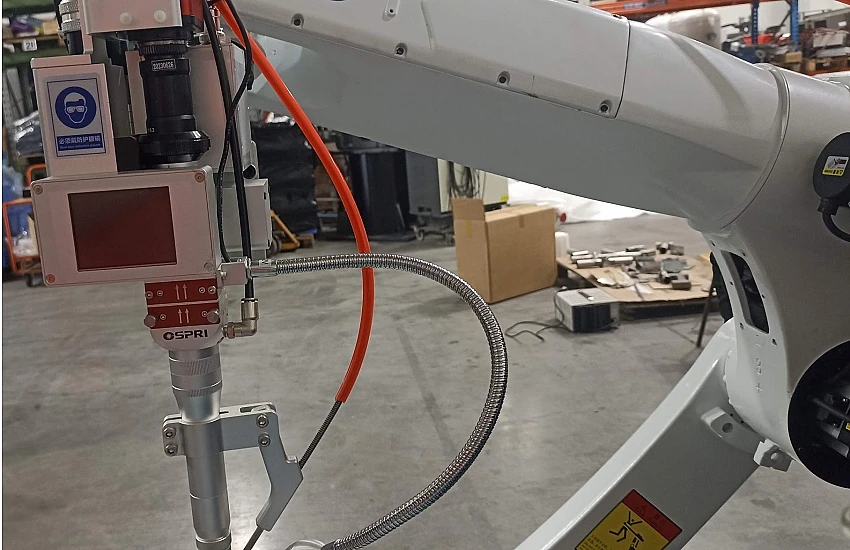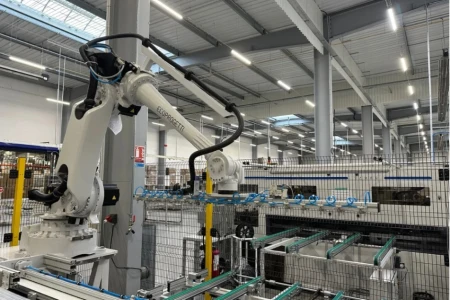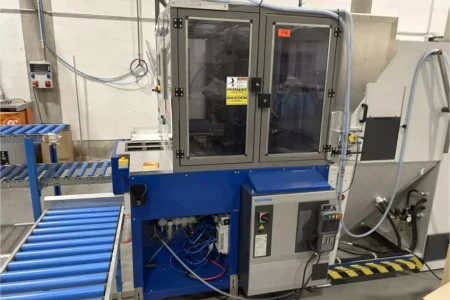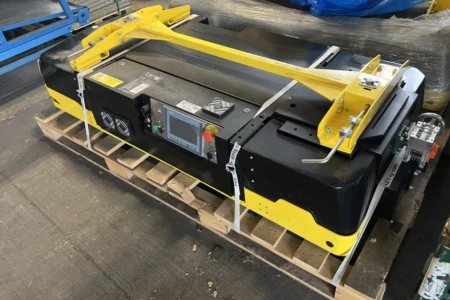Table of Contents
Fiber laser welding technology is a true breakthrough in the industry, which has revolutionized the approach to precise joining of materials. Thanks to the use of advanced optical fibers, the fiber laser allows for exceptional accuracy and efficiency, making it an irreplaceable tool in industries requiring the highest precision. In this article, we will take a closer look at the history of this technology, its operation, and the key advantages that make the fiber laser increasingly popular in various industrial sectors.
1. History and development of laser welding
Laser welding emerged in the 1960s, when lasers began to be used outside of laboratories. The first applications were in precision sectors such as microelectronics and aerospace.
In the 1970s and 1980s, commercial devices were introduced to the market, mainly with CO2 lasers, which, although effective, had their limitations, especially in terms of precision.
The breakthrough came with the introduction of the fiber laser, which revolutionized welding processes with higher precision, efficiency and lower operating costs. Fiber laser technology became the standard in the industry, offering the possibility of precisely joining materials with minimal distortion.
Application of fiber laser in modern industry
Fiber laser is particularly valued in industries where welding accuracy and minimizing the impact of heat on the welded material are key. Examples of applications include precision welding of automotive components, joining thin steel sheets in the aerospace industry and production of delicate electronic components.
The development of this technology has allowed the creation of devices such as the Fiber OKIO AB-1410G welding robot, which combine the advantages of fiber laser with automation of production processes, enabling even greater efficiency and precision of work.
2. What is a fiber laser and how does it work?
A fiber laser is an advanced laser technology that uses optical fiber as an active medium to generate laser radiation. This allows for the generation of an extremely precise and focused laser beam. Unlike traditional technologies, such as CO2 lasers, fiber lasers are characterized by higher energy efficiency and lower energy losses, which translates into greater efficiency and longer life of the device.
During operation, the light beam in a fiber laser is amplified inside an optical fiber doped with rare elements, such as ytterbium or neodymium. The efficiency of a fiber laser makes the welding or cutting process extremely precise, which is crucial in many industrial applications, such as precision cutting and metalworking.
Key Differences Between Fiber Laser and Other Laser Technologies
A comparison of fiber laser and CO2 laser shows that fiber laser offers several significant advantages.
- Firstly, it is more compact and durable, making it ideal for industrial applications where space and reliability are of the essence.
- Secondly, fiber laser maintenance costs are lower as it requires less maintenance and has a longer lifespan than traditional CO2 lasers.
- Another advantage of fiber laser is its ability to work with a variety of materials, from thin sheets to thicker metals, making it a versatile and flexible technology. Fiber laser precision is unmatched, enabling accurate cutting and welding, while minimizing material deformation.
3. Advantages of Fiber Laser Welding
- Welding precision - Fiber laser provides exceptional welding precision, allowing even very thin materials to be joined with minimal thermal deformation. This technology allows for obtaining high-quality welds that often do not require further processing, which translates into time and cost savings in serial production.
- Efficiency and low operating costs - Fiber laser efficiency is one of the key advantages - fast welding of materials while maintaining high quality. Additionally, the fiber laser is characterized by long service life and minimal maintenance requirements, which leads to low maintenance costs and a quick return on investment.
- Safety and versatility - Safety of work with the fiber laser is guaranteed thanks to advanced security systems, making it an ideal solution in intensive production lines. The fiber laser is versatile - used not only for welding and cutting, but also for engraving and marking, which makes it a universal tool in various industrial sectors.
4. Laser welding robot Fiber OKIO AB-1410G
Technical specification of the robot
Fiber OKIO AB-1410G is a modern welding robot designed for precise welding operations using advanced fiber laser technology. Its technical specification is as follows:

- Type: AB-1410G
- Working range: 1400 mm – allows for effective welding of even large components, which increases its versatility in various industrial applications.
- Payload: 10 kg – allows for handling a wide range of materials and elements of different weights, providing flexibility in the production process.
- Power supply voltage: 220V ±10%, 1 phase, 50 Hz – standard power supply voltage makes the robot easy to integrate into most production plants, without the need for additional infrastructure.
- Laser source: MAX PHOTONICS 3000W – high-performance laser source provides the power needed for fast and precise welding and cutting of various materials.
Unique Features of the Fiber OKIO AB-1410G
The Fiber OKIO AB-1410G stands out from other welding robots not only due to its technical specifications, but also due to the use of an advanced fiber laser. The reach of 1400 mm and the payload of 10 kg make this robot an ideal solution for precision operations in many industries. The precise cutting and welding that this model offers allow for excellent results even in the case of the most demanding materials.
The use of the MAX PHOTONICS 3000W source ensures that the robot can work with a variety of materials, including steel, aluminum, and titanium, while maintaining the highest quality standards. Its low operating costs result from the efficiency of the fiber laser technology, which minimizes the need for maintenance and downtime, thus increasing production efficiency.
Conclusion
To sum up, the fiber laser is an advanced technology that revolutionizes metalworking, providing precise fiber laser cutting and welding with the highest accuracy. The industrial fiber laser is distinguished not only by its power, but also by its exceptional durability, which translates into long-term and effective work. Automation of processes thanks to this technology allows for increased production efficiency, while minimizing operating costs. Knowing the advantages and disadvantages of the fiber laser, companies can better adapt its use to their needs, fully exploiting its potential in modern industry.







